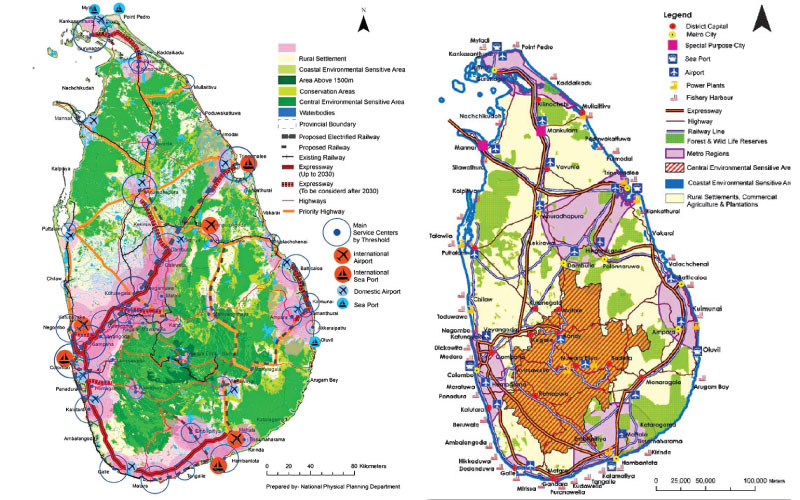Megapolis and Western Development Minister Patali Champika Ranawaka yesterday said the future investment and infrastructure projects should conform to the regulations and guidelines of the National Physical Planning Policy and Plan – 2050 which has been completed by a team of local experts.
The 2050 Plan compiled by the National Physical Planning Council (NPPA) which has been approved through a gazette, aims to promote and regulate the integrated planning of economic, social, physical and environmental aspects of land and territorial waters of Sri Lanka.
 |
| Minister Patali Champika Ranawaka |
The Minister outlined the national plan which takes into account population density, the potential for the creation of corridors, existing infrastructure, and the environment - during a press conference at his Ministry yesterday.
“We ask all the government institutions to implement all future projects, following the National Physical Planning Policy and support mitigating any environmental issues caused by development projects. The guidelines should be followed in the process of developing highway, railway projects,” he stressed.
Ranawaka said, the Megapolis Ministry has already developed comprehensive urban development plans for Colombo and Trincomalee. “We are also in the process of doing a similar urban development plan for Hambantota.” He added several other areas have been identified for urban development activities.
A large corridor in between Colombo and Kurunegala has been selected as being highly suitable for human habitats.
The areas according to the scale have very high highway access, land availability, railway accessibility, precipitation, and are free from disaster.
The area has a moderate rating on the scale for temperature.
This main development corridor is expected to make up 33-35 percent of the total population. This represents a 20-25 percent increase from 2012-2050. Other urban areas are projected to make up 20-25 percent of the total population. This represents a 10-12 percent increase from 2012-2050. The projected population in 2030 is 24 million and in 2050 is 25 million.
The Central Expressway is to extend to Trincomalee creating an economic corridor spanning from the east to the west of the island. There shall be a national physical planning council and this will facilitate the coordination of development plans. The council will consist of 22 ministers, the president, and chief ministers of each province.
Inclusive in the plan is the expansion of Sri Lanka’s continental shelf. This will take Sri Lanka’s exclusive economic zone from 583,610 sqkm (65,610 sqkm of land) to 1.3 million sqkm. There will be periodic checks by authorities with the national plan.
The national plan builds on previous national plans in specific areas. According the plans; An action Plan for Air Quality Management - Clean Air Action Plan 2025, National Biodiversity Strategic Action Plan (NBSAP) 2016-2022, National Climate Change Policy (2012) and National Disaster Management Policy 2010, National Policy on Elephant Conservation – 2006, The National Policy on Wild Life Conservation – 2000, National REDD+ Investment Framework and Action Plan (NRIFAP) 2017, Sri Lanka Tourism Strategic Plan (2017-2020), National Policy on Mineral Resources, Telecommunication and Digital Infrastructure, The National Housing Policy (Revised in January 2019) have been considered in conformity with the plans.
The following plans have a requirement for drafting; Ocean Resources Development and Marine Pollution Prevention and Labour Resource Development.



Add new comment